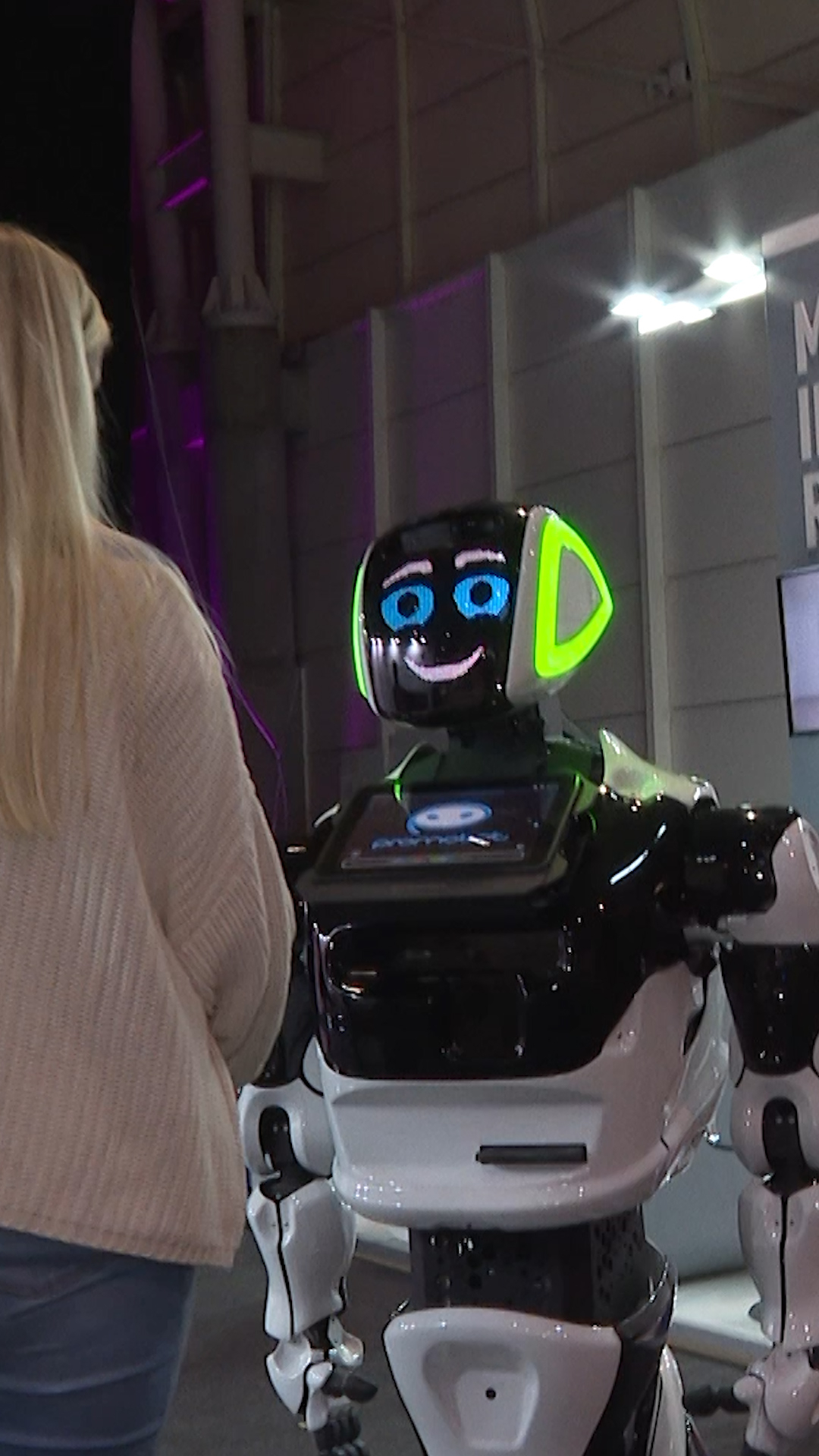A tech summit wouldn't be a tech summit without a celebrity.
And this year in Lisbon, it's Dave the robot.
01:41

(His name's not officially Dave, but we renamed him from Promobot with his inventor's permission because it felt friendlier.)
But whatever you call him, he's popular. The crowds flock to Dave, throwing questions at him ranging from weather forecasts to the meaning of life. He answers all perfectly and creator Oleg Kivokurtsev couldn't be prouder: "Today, we've built more than 500 robots, they're working in 35 countries." he tells CGTN. "Shopping malls, exhibitions, cinemas, business centers... in every case, the use case is different."
Oleg's here from Russia to sell his robot concept – he's looking for developers and partners to move the venture forward in Europe following success in countries such as China. And he says he's already had a huge response, having spoken to more than 10 companies in the first day.
There is no doubt robots are taking over the Web Summit this year – they are everywhere you turn. They range from cute, like Dave, to functional, like "Robochef," which helps in the kitchen – think of it like a robotic arm in a car construction plant but one that measures out nuts. Its creators say it's perfect for a high-stress kitchen environment, with no swearing chef in sight.

Robots are big at the Web Summit in Lisbon. Credit CGTN/Makez Rikweda
Robots are big at the Web Summit in Lisbon. Credit CGTN/Makez Rikweda
And speaking of robotic arms... there's another here from Brazil, with a more industrial use.
It's creator, Luma Boaventura explains its software enables these machines to be semi-autonomous on production lines, which helps with inventory and trends and using real-time data to plan ahead and work out what a factory's needs may be before they become apparent.
"We put our software with IOT, the internet of things, with sensors, machine robots, all kinds of stuff in the plant so we can monitor stuff. Not only in real time, we use regression, we use trends and statistics by time, the logs of the machine, and robot to use intelligence – artificial intelligence in a better way," Boaventura says.
One of the big draws is a brother and sister: Sophia and Phillip from Hong Kong. They took center stage last year and have returned. These are life-like robots, designed to look like humans, or as their creator David Hanson calls them, "embodied cognition."
Making them look as human as possible is his passion and his goal: "In autism treatment, elder care ... for any place where you need to emotionally engage with a user, having a robot with a human form can be a really powerful way of communicating," he tells CGTN.
"For me as an artist, that's very interesting. I'm interested in that question, what is it to be human ... what is distinctly human is that capacity to care, have compassion ... and if a machine can glean, care or gain that ability, it could be more human than a human that lacks compassion."